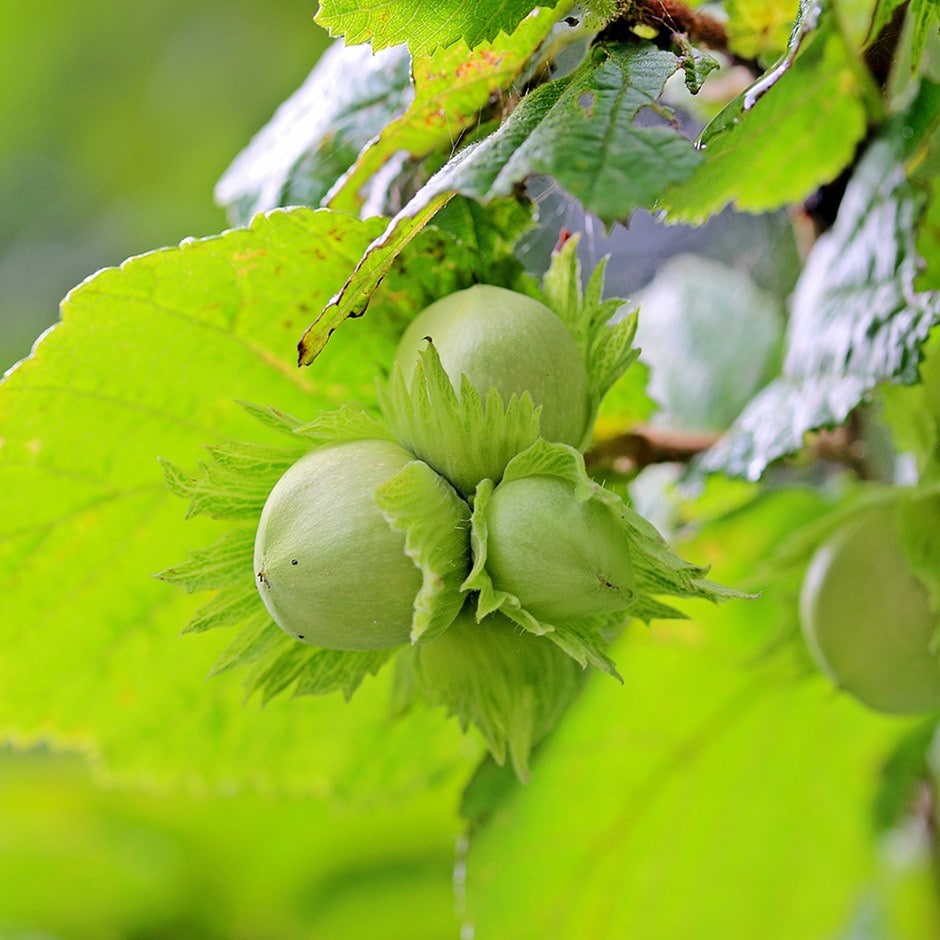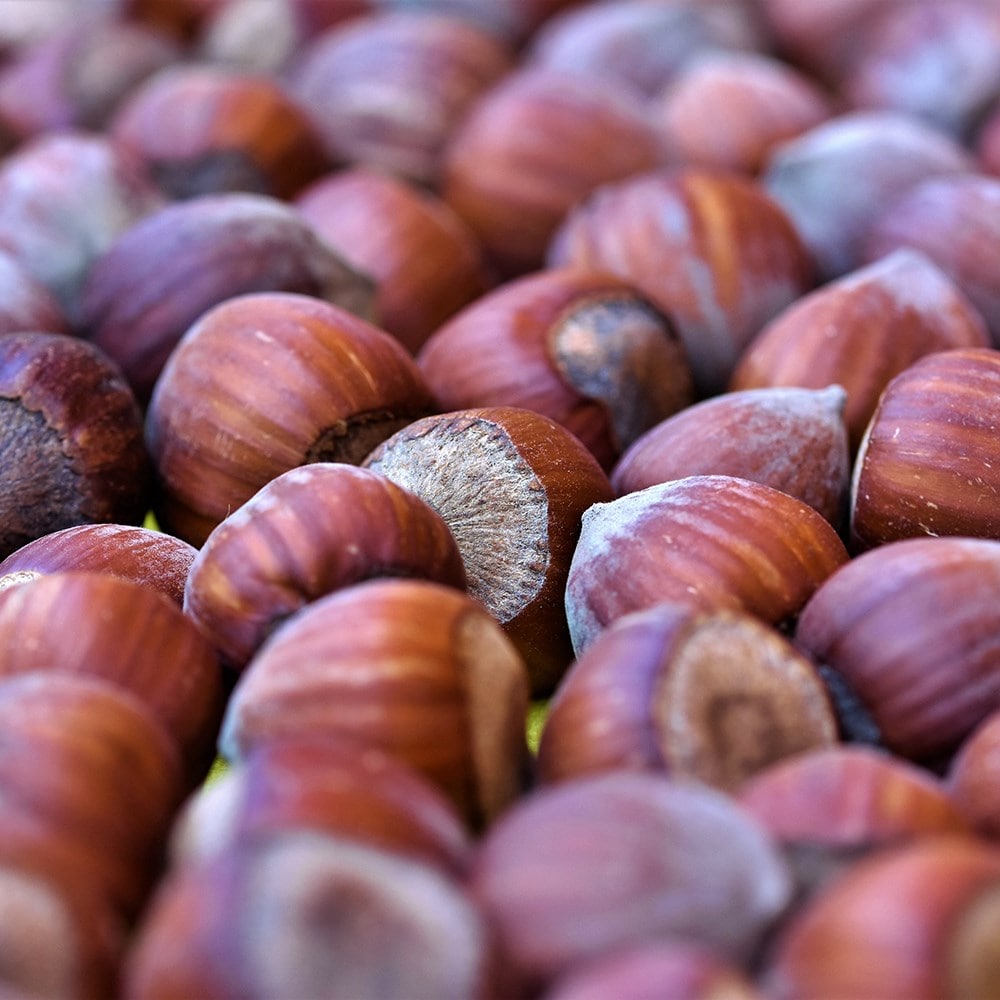Eventual height & spread
cobnut 'Cosford Cob'
cobnut / filbert / hazlenut ( syn. Corylus 'Filbert Cosford' )
- 7 litre pot | 1m tall
- £119.99
- available to order from autumn
- 9 litre pot | 1.2 - 1.5m
- £44.99
- available to order from autumn
- bare root | 1.2m tall
- £34.99
- available to order from autumn
Delivery options
- Standard £12.99
- Position: full sun to partial shade
- Soil: moderately fetile, moist but well-drained soil
- Rate of growth: fast
- Flowering period: February to March
- Hardiness: fully hardy
Known for its reliability and heavy cropping, this cobnut produces large nuts with a sweet flavour and thin shells that are easy to crack. Harvested from late September into October, the nuts are prized for both eating fresh and storing.
The tree itself is vigorous and hardy, making it a long-lived choice for orchards, smallholdings or larger gardens. In late winter, it puts on a display of numerous bright yellow catkins, adding ornamental value before leaf growth begins. Originating near Ipswich in the early 19th century, it remains one of the best traditional cobnuts for both flavour and yield.
Cobnut ‘Cosford Cob’ also serves as an excellent pollinator for other hazel cultivars, making it a versatile and productive option in a mixed planting.
The tree itself is vigorous and hardy, making it a long-lived choice for orchards, smallholdings or larger gardens. In late winter, it puts on a display of numerous bright yellow catkins, adding ornamental value before leaf growth begins. Originating near Ipswich in the early 19th century, it remains one of the best traditional cobnuts for both flavour and yield.
Cobnut ‘Cosford Cob’ also serves as an excellent pollinator for other hazel cultivars, making it a versatile and productive option in a mixed planting.
When planting cobnut or filbert, improve the soil with well-rotted compost or a soil conditioner and add mycorrhizal fungi to encourage strong root establishment. Support taller young plants with a cane or stake until they are established, and water generously around the base, especially in the first season.
Bare-root plants should be planted out as soon as they arrive. If this is not possible, they can be heeled in temporarily (covering their roots with soil) or potted up. Before planting, soak the rootball in a bucket of water for half an hour and make sure to incorporate lots of well-rotted garden compost in the planting hole.
These trees crop reliably on chalky soils and are best trained as a goblet-shaped bush for good fruiting. Keep a 60cm (2ft) radius around the base clear of weeds or grass, and apply a 5-7cm (2-3in) mulch of well-rotted organic matter each spring to conserve moisture and feed the soil.
Prune in March by removing dead, diseased or damaged wood, and thin out overcrowded stems if needed to maintain the open goblet framework. Light summer pruning can also help check vigorous growth and encourage nut production. For the best harvest, plant more than one cultivar nearby to ensure cross-pollination, as this greatly improves both yield and nut size.
Protect developing nuts from squirrels, who can strip trees before they are ready, by netting individual branches, using tree guards, or harvesting early once the husks begin to loosen.
Bare-root plants should be planted out as soon as they arrive. If this is not possible, they can be heeled in temporarily (covering their roots with soil) or potted up. Before planting, soak the rootball in a bucket of water for half an hour and make sure to incorporate lots of well-rotted garden compost in the planting hole.
These trees crop reliably on chalky soils and are best trained as a goblet-shaped bush for good fruiting. Keep a 60cm (2ft) radius around the base clear of weeds or grass, and apply a 5-7cm (2-3in) mulch of well-rotted organic matter each spring to conserve moisture and feed the soil.
Prune in March by removing dead, diseased or damaged wood, and thin out overcrowded stems if needed to maintain the open goblet framework. Light summer pruning can also help check vigorous growth and encourage nut production. For the best harvest, plant more than one cultivar nearby to ensure cross-pollination, as this greatly improves both yield and nut size.
Protect developing nuts from squirrels, who can strip trees before they are ready, by netting individual branches, using tree guards, or harvesting early once the husks begin to loosen.

